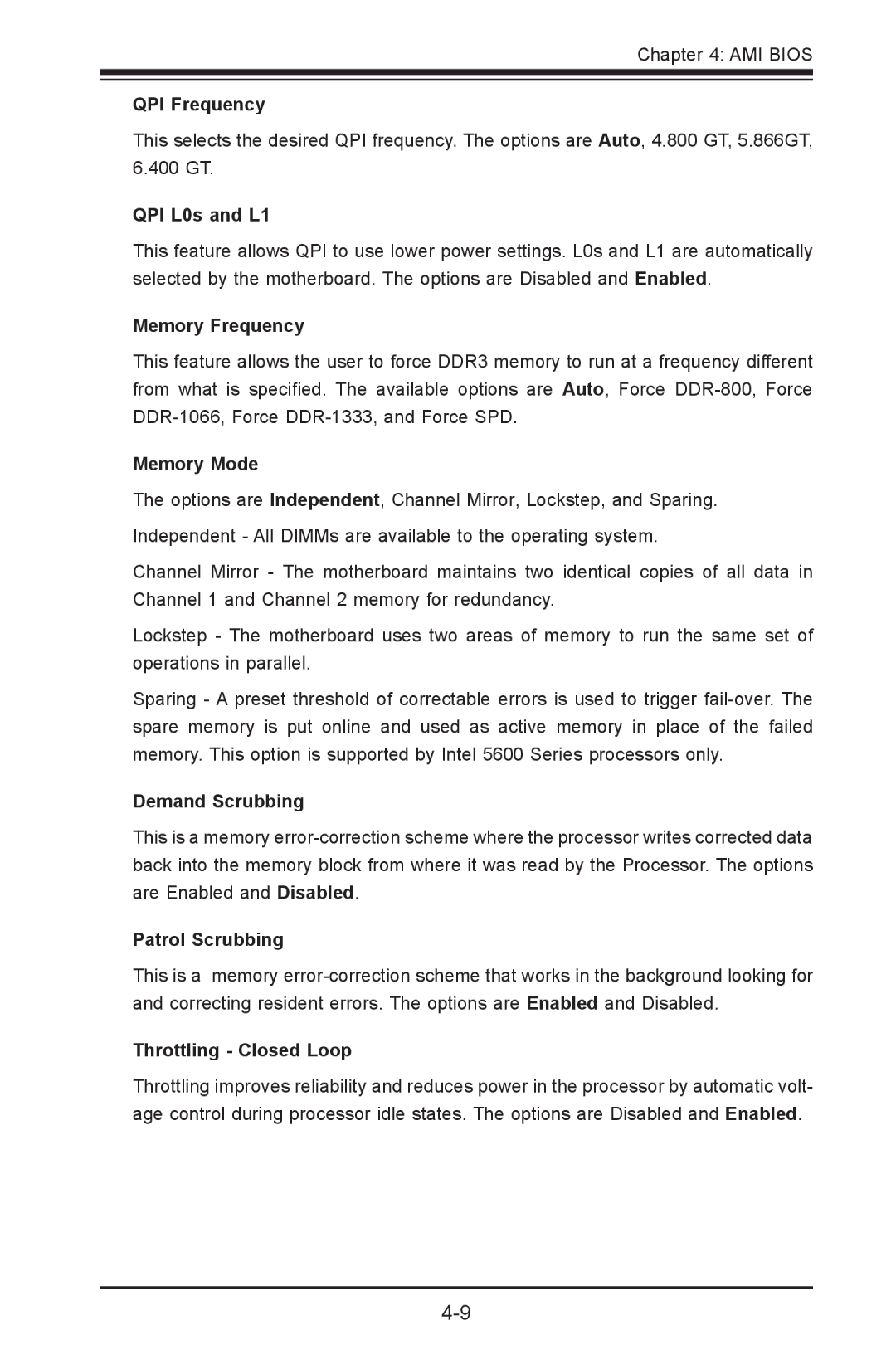
Chapter 4: AMI BIOS
QPI Frequency
This selects the desired QPI frequency. The options are Auto, 4.800 GT, 5.866GT, 6.400 GT.
QPI L0s and L1
This feature allows QPI to use lower power settings. L0s and L1 are automatically selected by the motherboard. The options are Disabled and Enabled.
Memory Frequency
This feature allows the user to force DDR3 memory to run at a frequency different from what is specified. The available options are Auto, Force
Memory Mode
The options are Independent, Channel Mirror, Lockstep, and Sparing.
Independent - All DIMMs are available to the operating system.
Channel Mirror - The motherboard maintains two identical copies of all data in Channel 1 and Channel 2 memory for redundancy.
Lockstep - The motherboard uses two areas of memory to run the same set of operations in parallel.
Sparing - A preset threshold of correctable errors is used to trigger
Demand Scrubbing
This is a memory
Patrol Scrubbing
This is a memory
Throttling - Closed Loop
Throttling improves reliability and reduces power in the processor by automatic volt- age control during processor idle states. The options are Disabled and Enabled.
